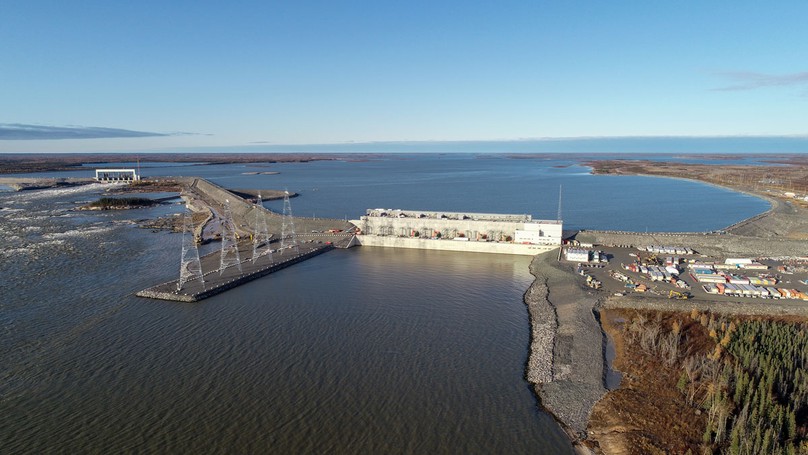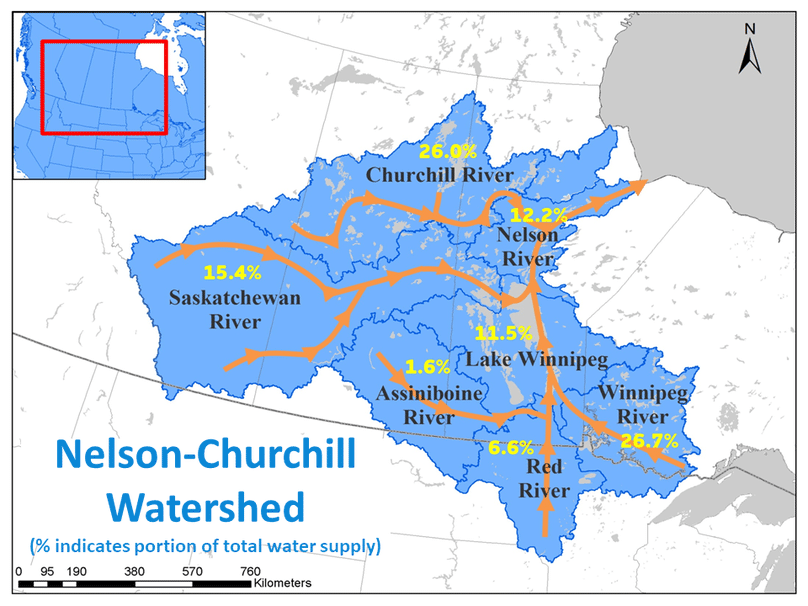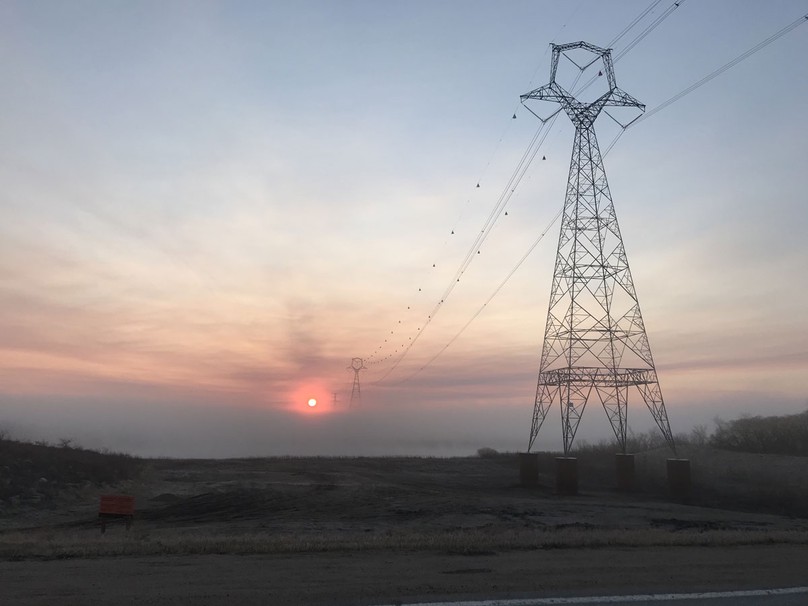
The Keeyask Generation Project is still being completed, but is already producing some electricity.
Enlarge image: Keeyask generating station surrounded by water.
Yes, there are dry conditions in southern Manitoba this spring, but our generating stations do not rely solely on southern Manitoba to maintain water levels.
Manitoba Hydro’s Energy Supply Planning and Water Resources teams have determined that winter snowpack was below normal in the south, as was the runoff into rivers from the spring melt.
“The recent snowfall certainly helped soil moisture levels so that more of the future rains will runoff into our rivers,” said Energy Supply Planning Department Manager Kevin Gawne, adding even with the late-season snow, river flows in the south are still expected to be below average.
“However, the good news is that snowpack conditions are better in the north where we are expecting average to above-average runoff this spring,” he said. “In addition, the amount of water stored in reservoirs across our system is about average.”
It is important to understand that the watershed (see basin map illustration) that our generating stations draw upon comes not just from southern Manitoba but from the west (all the way from the Rockies) and even from the east.

Manitoba Hydro draws from a wide-ranging watershed in Canada and the U.S.
But what if dry conditions persist? Does the amount of hydropower the utility produces each year depend on how much rainfall we get in spring and summer?
“Manitoba Hydro has done a lot to prepare for a drought,” Gawne said.
He said the last major drought in Manitoba was 17 years ago. Since then, Manitoba Hydro has added the Wuskwatim Generating Station and energy from two wind farms. New generation units are also coming into service at the Keeyask Generating Station.
Manitoba Hydro has also doubled its ability to import electricity with the Manitoba–Minnesota Transmission Project completed last summer.

Manitoba–Minnesota Transmission Project went into service in June 2020.
Enlarge image: Bipole towers stand in a misty field at sunrise.
“Should a drought start to affect our domestic supply of water, we will start progressively reducing export activity that is deemed to be of lower value to Manitoba Hydro, increasing imports when economically viable, and conserving our stored water to protect our resources for a prolonged drought scenario,” Gawne said.
He said these measures not only diversify our energy supply but help Manitoba Hydro sustain reliable operations in drought conditions that may affect hydroelectric generation.



